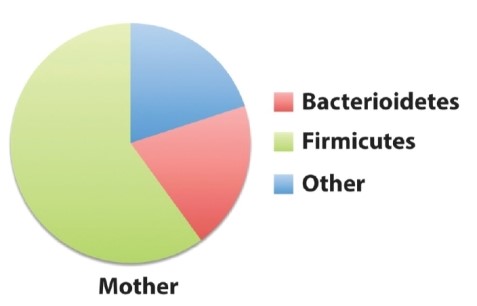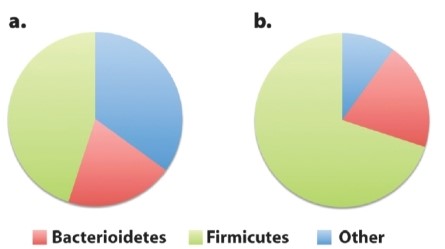Nodules found on the roots of leguminous plants like soybeans harbor bacteria that fix nitrogen. These nodules are an example of the intimate and specialized partnerships that have been established over time between prokaryotes and eukaryotes. Coevolution maintains these types of relationships since both participants benefit. Plants receive biologically useful forms of nitrogen needed for growth, and the bacteria reside in an oxygen-free environment required by enzymes involved in the nitrogen-fixing process. Humans also maintain intimate associations with beneficial bacteria and even archaea! In fact, the prokaryotic cells in and on human bodies outnumber the eukaryotic human cells by tenfold according to some estimates. These microbial inhabitants help humans digest food, provide essential vitamins absorbed by the intestines, and even impact the immune system.  The microbes that coevolve with plants arrive by infection of root tissue. The microbiota that coevolve with humans colonize human tissues after birth. Below is a chart showing the distribution of the gut microbiota in a human female.
The microbes that coevolve with plants arrive by infection of root tissue. The microbiota that coevolve with humans colonize human tissues after birth. Below is a chart showing the distribution of the gut microbiota in a human female.
Panels (a) and (b) below depict two scenarios for the distribution of the gut microbiota in her son. The son maintains a similar diet in both scenarios and has not undergone recent antibiotic treatment (which would decimate and/or alter the entire gut community) . Which of the two scenarios supports the hypothesis that microbiota in the son arrive by infection? Which suggests the microbiota are inherited by offspring? 
Definitions:
Transitions
The process or a period of changing from one state or condition to another in writing, music, video editing, or life phases.
Main Clauses
The essential parts of a sentence that contain a subject and predicate and can stand alone as a complete thought.
Simple Sentence
A sentence structure that contains one independent clause and no dependent clauses.
Simple Sentences
Sentences that contain only one independent clause, making them easy to understand.
Q38: The first eukaryotic cell is thought to
Q44: Many researchers hypothesize that modern humans have
Q60: Which of the following phylogenetic trees shows
Q61: Which of the following characteristics separates primates
Q75: You are given a fossil and told
Q80: A young man is watching his father
Q116: Differentiation of multiple cell types occurs in:<br>A)animals.<br>B)fungi.<br>C)protists.<br>D)bacteria.
Q117: All bacteria are unicellular.
Q148: Because the morphological and physiological characteristics shared
Q155: The discovery that single-celled sister groups of